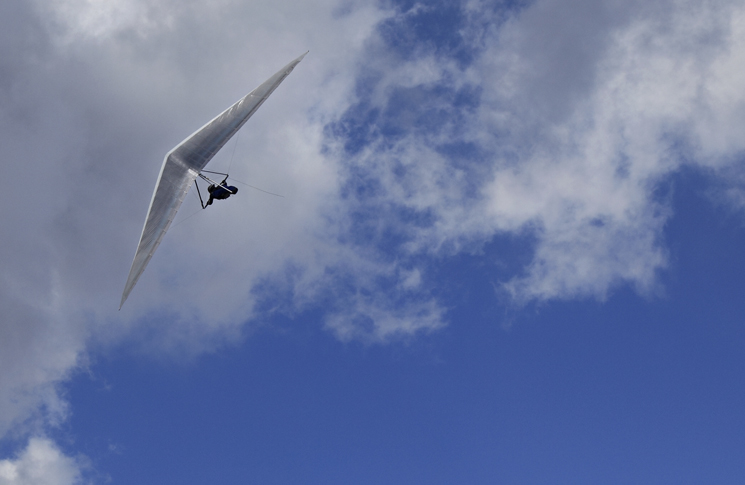As I sit here typing in a neck brace, arm cast and with a mouth full of stitches, I can’t help but note the irony. I’m often referred to as ‘the safest man in hang gliding’. My pre-flights are like most people’s pre-purchase inspections. Once, when nominated for the safety committee at a competition, I heard someone yell, ‘No … he’ll be too safe’. So how does someone who has successfully avoided injury throughout many years as a fighter pilot, hang glider pilot, glider pilot, solo marlin fisherman, kite surfer, skier and snowboarder suddenly come unstuck? In this case a self-proclaimed, risk-management expert failed to do just that. I became too task-focused, too engrossed in ‘training like you fight’ to borrow from military jargon, to consider the bigger picture.
The outcome was that on a reasonably windy day with a low top-of-useable lift (2500 ft AGL) a cross-country hang-gliding flight was continued from the flatlands into hilly country. At approximately 15 ft during landing, violent rotor slammed the glider into the ground resulting in significant injuries.
Firstly, I’ll address what the root cause was not. It was not a lack of airspeed during the landing approach or a failure to respond to the increased rate of descent by letting the bar out to pay off excess speed in order to cushion the landing. I had plenty of airspeed. The increased rate of descent was unlike anything I have ever experienced before in nearly 700 hours hang gliding. From about 15 ft, I was slammed into the ground almost instantly before I had any time to react.
The root cause was primarily a risk-management failure, likely contributed to by over confidence. This was a no-stakes free flying day, not a competition. Winds were 12–14 knots and a bit gusty on the Mt Bakewell take-off hill, essentially launch-in-a-lull type conditions. With very light lift and a low inversion it was challenging enough to fly the first leg to Northam in the flatlands. From Northam the second leg to the old Toodyay gaol entered the hills. I failed to consciously consider all the risks at this point and instead just ‘flew the task’ in never-give-up ‘competition mode’. The risks of course were rotor in the hills, reduced useable landing options and reduced glide potential on such a low day. In terms of over confidence, I had recently been sticking great landings into tighter and tighter spots which probably had me at least subconsciously less worried about pushing further into the hills.
In hindsight, potential defences are obvious. A more robust and conscious risk-management process should have occurred before deciding whether to continue the flight into the hills. This should have considered not only the risks listed previously but also the rewards. In this case, the rewards would have been minimal, especially considering that I am now missing out on several months of flying and the last competition of the Australian season.
The task was set by me prior to arriving at the hill. An opportunity existed to change the second leg of the task to avoid the hills on a windy day once we noted the actual conditions, but I failed to consider this at the time.
There is a bright side to the story. I always fly with a Spot tracker located in a chest pocket for easy access. I activated the SOS button after crashing. Everything worked as advertised and very expeditiously. I received a phone call from Spot HQ in less than two minutes and an ambulance was despatched.
So, what’s the damage? I get to ponder my mistakes for eight weeks while wearing both neck and hand braces while spinal and thumb ligaments heal. At least I’m told I should make a full recovery after a few months. Lesson learned—I’m sure I’ll be a bit wiser for next season … and hopefully someone else can learn from my mistake!



Comments are closed.